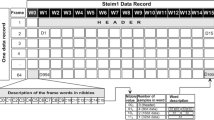Summary
The existing archives on geological and soil information held by national survey organizations are usually not available to potential practical users. There have been no large-scale attempts to automate the archives of soil profile descriptions and geological borelogs, for the problems that are posed by their variable data structures and lack of standard terminology are among the most severe in automated data processing.
Variable length records are preferably used because they mimic closely the normal recording format of the surveyors. The less rigorous data handling may be supported by error—checking and standardization systems that operate automatically on the data, and enable a data base to be built much faster than when a fixed recording format is used for existing archives.
Bit representation, where the value of a binary bit (1 or 0) represents the answer to a simple or elaborate geological or soil question, has considerable future. When the internal questions reflect the real questions potential users are likely to put to the system, extremely fast data manipulation may be achieved.
Examples of the various forms of data representation in a Dutch project between the Geological Survey and the Soil Survey are demonstrated in relation to real data.
Formalization of standardization procedures are suggested, so that some of the information loss and distortion associated with the use of old records may be overcome.
Résumé
Les archives existantes sur l’information géologiques et pédologiques établies par d’organismes nationaux ne sont pas en général accessible pour les utilisateurs.
Il n’y a pas été de tentatives d’une grande échelle pour l’automation d’archives pédologiques et géologiques, car les problèmes concernant la variabilité des structures des données et le manque d’une terminologie standardisée ont un caractère très sévère.
L’auteur compare de systèmes divers. Il estime que la représentation ”bit” aura de bon avenir, parce que la valeur d’un ”bit” (1 ou 0) représente la réponse d’une question géologique ou pédologique. Si les questions internes rendent les questions réelles les usagers potentiels auront l’aptitude d’utiliser le système et on a bon tir à une manipulation rapide des données.
Des examples d’un projet néerlandais sont traités. Enfin la formalisation de procedures de standardisation est suggérée pour résoudre les problèmes liés à l’utilisation de documents anciens.
Similar content being viewed by others
Author information
Authors and Affiliations
Rights and permissions
About this article
Cite this article
Bie Stein, W. The representation of geological and soil information within an automated data handling system. Bulletin of the International Association of Engineering Geology 10, 27–29 (1974). https://doi.org/10.1007/BF02634627
Issue Date:
DOI: https://doi.org/10.1007/BF02634627




